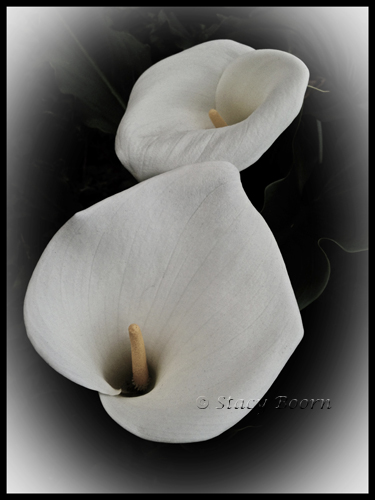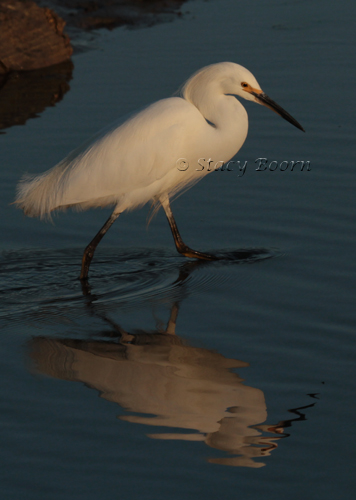 One-petaled white flowers filled the sanctuary of the church. Single thick stems reaching two to three feet heavenward with arrowhead shaped leaves were jam-packed into pots, vases and aluminum foil holders. It was as if they were standing at attention waiting for the first round of “Alleluias.â€
One-petaled white flowers filled the sanctuary of the church. Single thick stems reaching two to three feet heavenward with arrowhead shaped leaves were jam-packed into pots, vases and aluminum foil holders. It was as if they were standing at attention waiting for the first round of “Alleluias.â€
But they were not Easter Lilies and, to the best of my recollection, even from the recesses of my childhood memories this flower never filled the congregations of my East Coast religious experiences. For the first few years of my West Coast life I heard their name as Cali Lily. I thought that was short for California Lily. It seemed possible since I saw them growing in nearly every yard, along coastal slopes and in various parts of Golden Gate Park.
 Finally spell check helped me realize they were far from native California plants. Then I discovered the calla lily was not a lily at all, and although it is related to the calla genus, it is not really a calla either. Calla lily is actually the common name for the zantedeschia genus. It is a genus of twenty-eight different species all native to the southern parts of Africa with a tropical climate.
Finally spell check helped me realize they were far from native California plants. Then I discovered the calla lily was not a lily at all, and although it is related to the calla genus, it is not really a calla either. Calla lily is actually the common name for the zantedeschia genus. It is a genus of twenty-eight different species all native to the southern parts of Africa with a tropical climate.
The Calla Lily is a beautiful flower and over the years it has become very popular especially in Europe and the United States for weddings and various festive celebrations. Now I wait for their arrival every spring to photograph them and hope one of my images will finally hold a candle to those created by Mapplethorpe. Their plentiful beds remind us to not overlook common or ordinary plants/people/things because there is always a new angle or photographic technique to max their stunning magnificence.
My colleague the Rev. Elizabeth Eckdale, pastor of St. Mark’s Lutheran Church in San Francisco, loves anthuriums. But until I create a new anthurium image I dedicate these Calla Lily shots to her in honor of her 25th anniversary of ordained ministry in the Lutheran Church. Congrats!
White is a very difficult subject to photograph because an in-camera-meter will read the light on your subject and renders it as a medium tone. Without any compensation for this your image will be underexposed. The simple solution is to over expose by 1 to 2 stops. If your camera is evaluating the light from multiple spots in your image your exposure might be okay. (But snow, wedding dresses, white smoke from the Vatican and egrets will be a challenge.)
The Great Egret is the largest white egret in the United States. A Great Egret can be distinguished by its large size, yellow bill and black legs. There are three species of egret that are typically white in color as adults: Great, Snowy and Cattle. You can find all of these locally. My three favorite locations for the Great and Snowy Egrets are Golden Gate Park, Larkspur Marsh Bird Refuge and the lagoon near Stinson Beach.
No feathers fly alone. I am in favor of conclaves of buds and birds. (Yes, read into that!)

